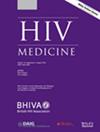Microbiomes detected by cerebrospinal fluid metagenomic next-generation sequencing among patients with and without HIV with suspected central nervous system infection
Abstract
Background
Opportunistic infections in the central nervous system (CNS) can be a serious threat to people living with HIV. Early aetiological diagnosis and targeted treatment are crucial but difficult. Metagenomic next-generation sequencing (mNGS) has significant advantages over traditional detection methods. However, differences in the cerebrospinal fluid (CSF) microbiome profiles of patients living with and without HIV with suspected CNS infections using mNGS and conventional testing methods have not yet been adequately evaluated.
Methods
We conducted a retrospective cohort study in the first hospital of Changsha between January 2019 and June 2022 to investigate the microbiomes detected using mNGS of the CSF of patients living with and without HIV with suspected CNS infections. The pathogens causing CNS infections were concurrently identified using both mNGS and traditional detection methods. The spectrum of pathogens identified was compared between the two groups.
Results
Overall, 173 patients (140 with and 33 without HIV) with suspected CNS infection were enrolled in our study. In total, 106 (75.7%) patients with and 16 (48.5%) patients without HIV tested positive with mNGS (p = 0.002). Among the enrolled patients, 71 (50.7%) with HIV and five (15.2%) without HIV tested positive for two or more pathogens (p < 0.001). Patients with HIV had significantly higher proportions of fungus (20.7% vs. 3.0%, p = 0.016) and DNA virus (59.3% vs. 21.2%, p < 0.001) than those without HIV. Epstein–Barr virus (33.6%) was the most commonly identified potential pathogen in the CSF of patients living with HIV using mNGS, followed by cytomegalovirus (20.7%) and torque teno virus (13.8%). The top three causative pathogens identified in patients without HIV were Streptococcus (18.2%), Epstein–Barr virus (12.1%), and Mycobacterium tuberculosis (9.1%). In total, 113 patients living with HIV were diagnosed as having CNS infections. The rate of pathogen detection in people living with HIV with a CNS infection was significantly higher with mNGS than with conventional methods (93.8% vs. 15.0%, p < 0.001).
Conclusion
CSF microbiome profiles differ between patients living with and without HIV with suspected CNS infection. mNGS is a powerful tool for the diagnosis of CNS infection among people living with HIV, especially in those with mixed infections.

 求助内容:
求助内容: 应助结果提醒方式:
应助结果提醒方式:


